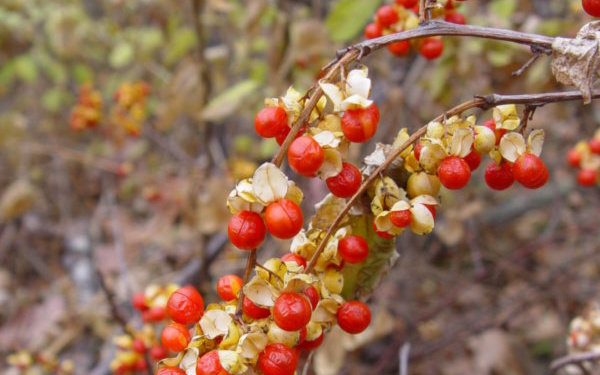
AUGUSTA, Maine – Maine’s natural resources agencies invite everyone who cares for the environment to get involved in National Invasive Species Awareness Week Feb. 24-28.
The nationwide week is designed to raise awareness of invasive species. In Maine, invasive species are already impacting lakes, rivers, wetlands, forests and ocean, and are taking a toll on the natural resources economy.
“Our state parks and public lands, our farms, forests and water bodies are all being damaged by invasive species,” said Commissioner Amanda Beal of the Department of Agriculture, Conservation and Forestry. “Everyone acknowledges that we can and should do more to help, and National Invasive Species Awareness Week is a perfect time to learn how to prevent and manage invasive species.”
Invasive pests, including emerald ash borer, browntail moth, multiflora rose, Asiatic bittersweet, milfoil, green crabs and countless others, are harming Maine’s unique natural resources, recreation and tourism economy, and the livelihood, traditions, and health of thousands of Maine people.
This week is the first National Invasive Species Awareness week; part two will take place May 16 to 23.
Invasive species are those plants and animals, including insects and microbes, that are not native to Maine and cause harm to the environment, the economy and human health. Maine, because of its unique natural resources and its status as the most forested state in the nation, is under threat from numerous invasive species.
Of Maine’s nearly 6,000 lakes, fewer than 1 percent are known to be currently infested with invasive aquatic plants. Eleven invasive aquatic plants are identified in Maine law as illegal to import, sell, and transport, with six already discovered in some state lakes.
Invasive terrestrial plants threaten Maine’s wild places and can harm working forests and productive farms, including plants such as glossy buckthorn and Japanese knotweed. Maine prohibits the sale of thirty-three species of invasive plants, and over 100 species are listed on an advisory list of invasive plants to help guide land managers.
Maine’s forest trees are under attack from multiple invasive forest insect pests, such as emerald ash borer and hemlock woolly adelgid which will spread and continue to kill trees throughout the state, while other invasive pests like browntail moth affect quality of life and human health. Other invasive insects like Asian longhorned beetle or diseases like oak wilt have similar potential to damage Maine’s forests if they arrive here.
The Maine Forest Service has a strict out-of-state firewood ban to prevent devastating introductions like these and natural resource managers everywhere continue to encourage the use of local or heat treated firewood only.
The agencies offered these tips on how residents can help prevent and manage invasive species.
- Look for woodpecker blonding on ash trees. This shallow flecking of the bark by woodpeckers is a common sign of an emerald ash borer-infested ash tree. When you think you see blonding, take a “best quality” photo, note your location, and report it online at https://www.maine.gov/dacf/php/caps/EAB/EABreportFORM.shtml.
- Learn how to identify invasive plants that might be growing on your property. Visit the DACF’s gallery online at https://www.maine.gov/dacf/mnap/features/invasive_plants/invasives_gallery.htm. For help recognizing problem plants, consider ordering a copy of the Maine Natural Areas Program’s Maine Invasive Plant Field Guide. The guide has detailed photos and recommended control methods to help to reclaim the landscape.
- Be on the lookout for the invasive tree of heaven, which is host to a new invasive insect threat, the spotted lanternfly. If you think you have seen tree of heaven in Maine, please report it to invasives.mnap@maine.gov.
- Don’t release aquarium fish and plants, live bait, or other exotic animals into the wild.
For more information about Maine’s invasive species, visit https://www.maine.gov/portal/about_me/invasives.html.




